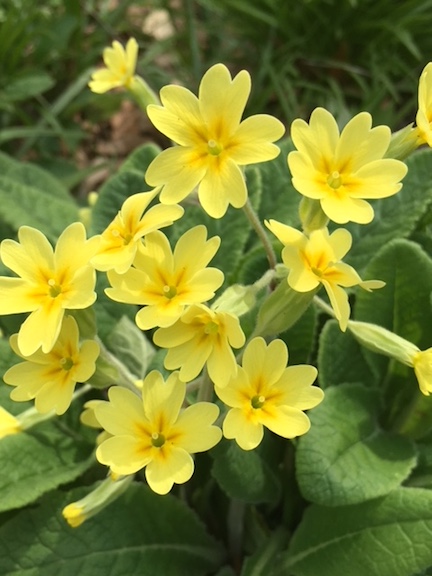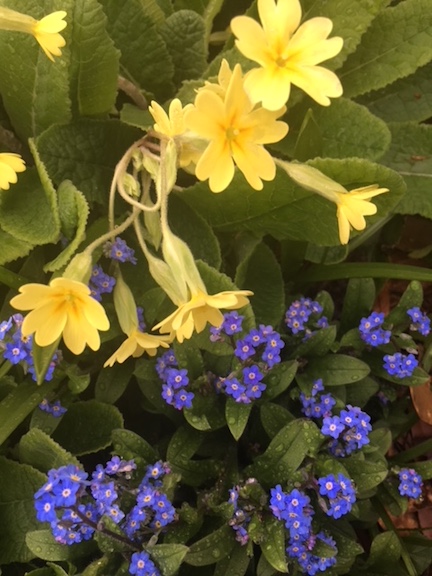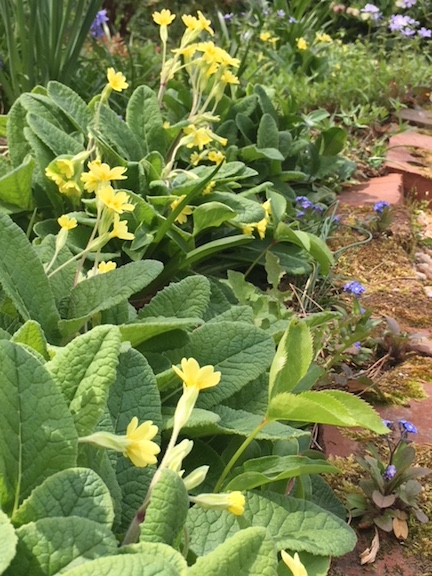My mother had a casual but beautiful garden and one of her favorite plants was the little English cowslip, Primula veris. This is NOT to be confused with the candy-colored primroses that are ubiquitous in the garden stores these days. Sporting neon colors of pink, blue, red and who knows what else, these short lived bits of plugged in color would have looked ridiculous in my Mom’s naturalized, spring time garden.

The lovely light lemon colored blossoms of cowslip are one of the first garden flowers to appear in spring. This plant is native to fields and meadows throughout Europe and Western Asia and is a common hedgerow plant in England. It has always been appreciated for its early bloom. Both the genus name, Primula (meaning “firstling of spring” and the species name, veris (meaning spring bloom) refer to this early appearance on the garden stage.

The Spanish used the raw leaves as salad greens. The English used the blossoms to flavor wine and vinegar. The Celtic Druids were said to have put the blossoms in potions to increase the effectiveness of other herbs.
The plant is not too commonly found in nurseries and garden centers here but if you do see it, you should snap it up. It is a thoroughly satisfactory plant. After it blooms, the leaves continue to grow for a few months then begin to fade away in the heat of summer. Seeds can be harvested and replanted in late summer. Perhaps a better way of propagating this is by dividing established plants.

My mother used this low growing clump forming plant to line the pathway to her next door neighbor’s house. It was a perfect choice for this as the plant spreads slowly and retains it’s basic shape for years, but more than that, I just think that Mom wanted to walk down a primrose path.

The cowslips in my garden are divisions from my mothers. Partly in tribute to her and partly because I like walking down a primrose path myself, I have lined the walkway to my art studio with this little plant – and think of Mom every time I see these harbingers of spring.
